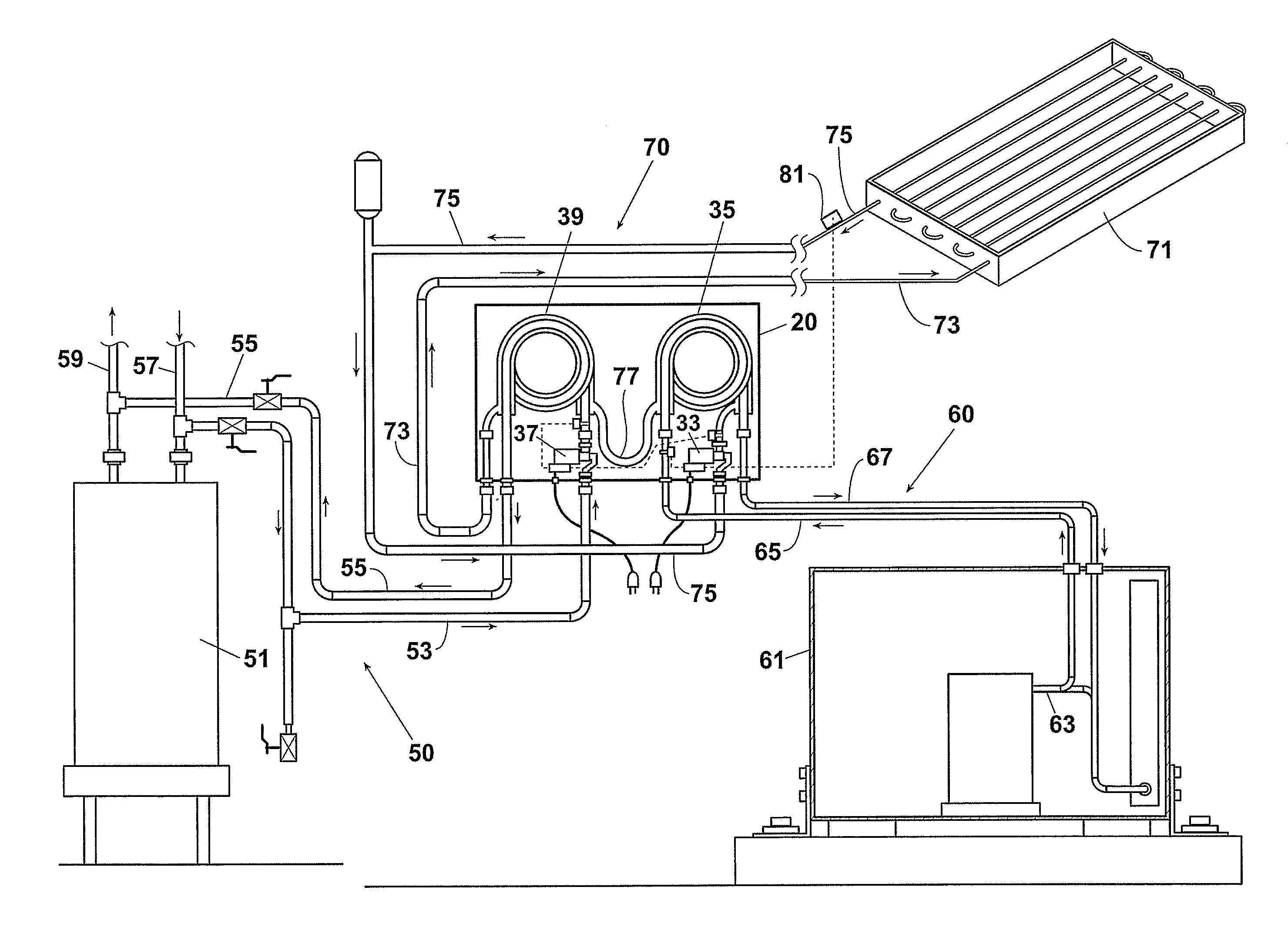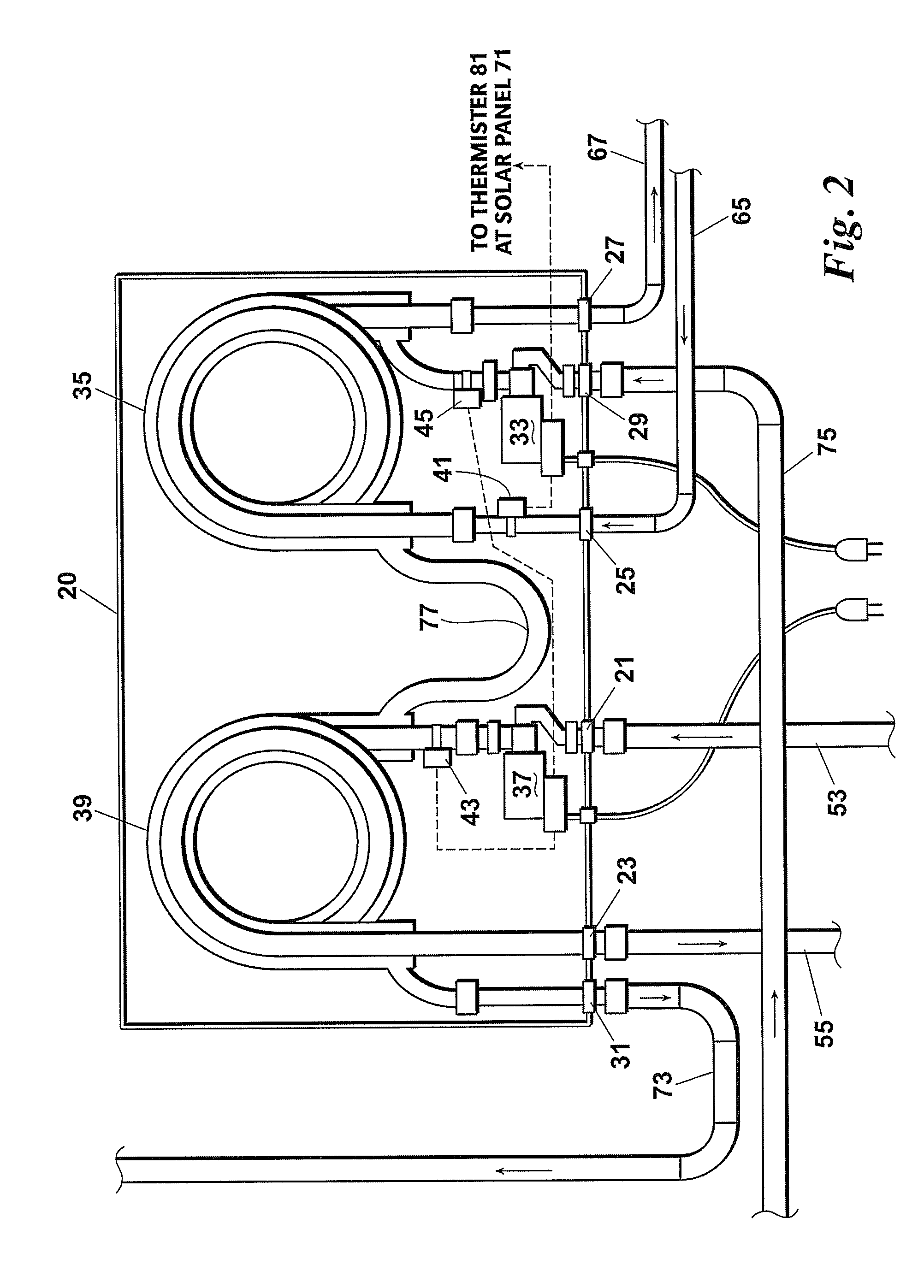Solar hot water and recovery system
a recovery system and solar energy technology, applied in indirect heat exchangers, lighting and heating apparatuses, heating types, etc., can solve the problems of water being pumped relatively, the performance and cost effectiveness of a hru for its intended purpose have declined, and the amount of waste heat available as an input to the hru has decreased accordingly. , to achieve the effect of essentially free water heating, reducing consumption and improving the performance of the air conditioning or heat pump system
- Summary
- Abstract
- Description
- Claims
- Application Information
AI Technical Summary
Benefits of technology
Problems solved by technology
Method used
Image
Examples
Embodiment Construction
[0012]Referring first to FIG. 1, a solar hot water and recovery system 10 includes a water loop 50, a refrigerant loop 60 and a solar loop 70. Cross-heat exchange occurs in a first heat exchanger 35 between the heat transfer mediums 65, 75 of the refrigerant loop 60 and the solar loop 70 to produce a super-heated fluid stream 67. Cross-heat exchange also takes place in a second heat exchanger 39 between the now-lower temperature heat transfer medium 77 of the solar loop 70 and the water loop 50 to produce a heated water stream 55. More specifically, the system 10 includes the steps of:[0013]routing to a first heat exchanger 35 a first heated fluid stream 65 exiting the hot gas side 63 of a cooling unit 61 and a second heated fluid stream 75 exiting a solar panel 71;[0014]transferring heat between the first heated fluid stream 65 and the second heated fluid stream 75 so as to further heat the first heated fluid stream 75 and produce a first cooled fluid stream 77 and a super-heated f...
PUM
 Login to View More
Login to View More Abstract
Description
Claims
Application Information
 Login to View More
Login to View More - R&D
- Intellectual Property
- Life Sciences
- Materials
- Tech Scout
- Unparalleled Data Quality
- Higher Quality Content
- 60% Fewer Hallucinations
Browse by: Latest US Patents, China's latest patents, Technical Efficacy Thesaurus, Application Domain, Technology Topic, Popular Technical Reports.
© 2025 PatSnap. All rights reserved.Legal|Privacy policy|Modern Slavery Act Transparency Statement|Sitemap|About US| Contact US: help@patsnap.com



